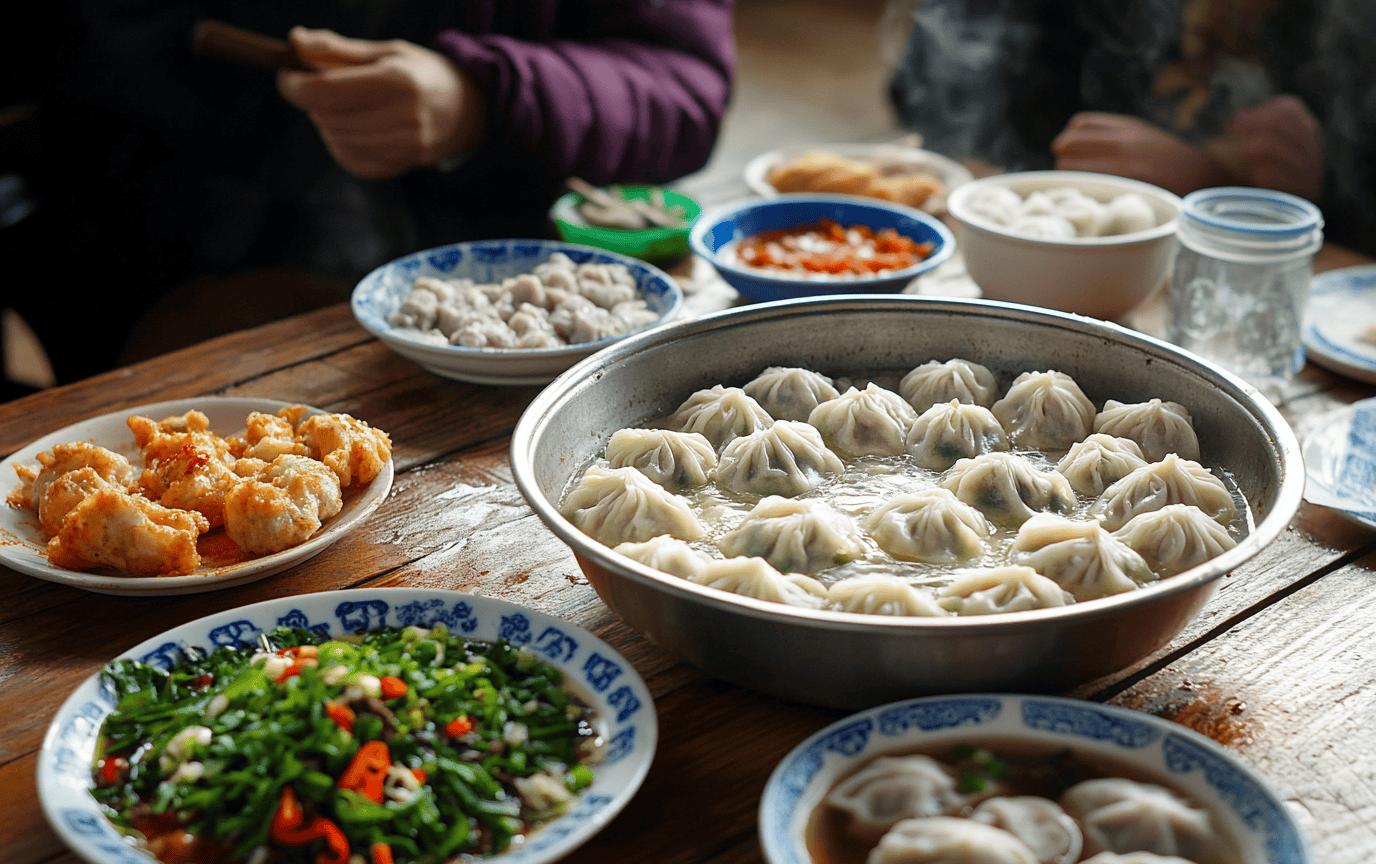Exploring the Cuisine of China: Dumplings and More
Chinese cuisine is a symphony of flavors, echoing through centuries of cultural interplay and regional diversity. At its core lies the dumpling, a treasure embraced by both the humble home and the lavish feast. With each bite, we may taste history, family, and the artistry of generational recipes. But wait—Chinese cuisine is more than just dumplings. It is a canvas painted with hundreds of flavors, textures, and traditions that beckon the curious palate.
Introduction to Chinese Cuisine
The marvel of Chinese cuisine unfolds like a dragon’s tail, stretching back thousands of years. Emerging from the central regions, it has influenced countless culinary traditions worldwide. At its essence, Chinese food is not merely about sustenance; it encapsulates a way of life—where rice, noodles, tofu, and tea stand as cornerstones in a nation’s cuisine.
When sitting down to a traditional Chinese meal, you experience the harmony of flavors; the spread usually comprises fruits, vegetables, grains, and meat, but seldom dairy. Instead of yogurt or milk, expect tofu and soymilk to fill that role, providing both calcium and protein.
Regional Variations
The vastness of China births spectacular culinary diversity. Each region bears its unique characteristics rooted in geography, climate, and local ingredients. Among them are the Four Great Traditions and Eight Great Traditions, showcasing a plethora of tastes and the artistry of chefs across provinces.
Sichuan Cuisine
Sichuan cuisine kicks off the journey with its bold, spicy character. Here, every dish tells a story of heat—think **Mapo Tofu** and **Kung Pao Chicken**, where **Sichuan peppercorns** and fiery chili pierce through every bite like a passionate love affair gone rogue.
Guangdong (Cantonese) Cuisine
Then shifts to Guangdong, where **Dim Sum** and **Roast Goose** play the starring roles. This cuisine embraces freshness and tenderness, relying on delicate balance and an impressive variety of ingredients. Imagine tea houses, where the clattering of the carts feels like a gentle symphony, tempting you with steamy bun baskets adorned with all manner of savory delights.
Shandong Cuisine
Moving north, Shandong cuisine shines with its emphasis on seafood. Known for its liberal use of garlic and ginger, classic dishes like **Dezhou Braised Chicken** utilize the finest of havens under the waves, elegantly prepared to astound your senses.
Huaiyang Cuisine
Finally, take a moment to revel in Huaiyang cuisine, known for its refined, artistic presentation. Think of the graceful **Dongpo Pork** and stunning **Steamed Fish with Pickled Mustard Greens**—beautiful plates crafted with care, each bite narrating the poetry of culture.
Dumplings: A Symbol of Chinese Culture
More than a meal, dumplings—jiǎozi—are steeped in symbolism and lore, descending from the period of the Han Dynasty, where they allegedly offered healing properties against frostbite. Enveloped in soft dough, they cradle fillings ranging from savory meats to vibrant vegetables. During key celebrations like the Chinese New Year, they embody wishes for wealth and prosperity, prepared with care and shared with laughter.
Types of Dumplings
– **Jiaozi**: Rolled thin, stuffed generously, these classic dumplings often carry a filling of tender pork mingling with fresh veggies.
– **Baozi**: These soft, steamed buns bloom like clouds, revealing savory surprises hidden within.
– **Tangyuan**: A sweet treat during the Lantern Festival, offering roundness symbolizing reunion and completeness.
– **Shaomai**: Resilient and bursting with flavors, these open-topped dumplings hug a savory mix of pork and shrimp, fueling conversations over shared plates.
Other Iconic Chinese Dishes
And what would the feast be without tasting other icons of a nation?
- Peking Duck: With crispy skin and tender, moist meat, this Beijing dish could easily symbolically shield its dreams in a golden hue.
- Wonton Soup: Nestled in a warm broth, wontons drift like little boats, each packed with delicate fillings.
- Spring Rolls: These crisp pastries filled with vegetables and sometimes meat make a tantalizing start, fitting neatly into any meal.
- Hot and Sour Soup: An intricately balanced dish, contrasting deeply flavorful earthy mushrooms and lively spices.
Chinese Dining Culture
Dining in China is akin to a social tapestry woven from shared experiences. Meals are communal affairs, converging around a central-placed array of dishes—each person invited to partake, each flavor a conversation starter. Eventually, soup finds its place toward the end, a warm conclusion to the festivities.
Traditional Chinese restaurants elegantly accommodate this communal ethos, often featuring round tables to foster closeness. Think of the laughter that fills such spaces as chopsticks clink against porcelain, teasing flavors wafting like an unasked question lingering in the air.
Influence of Chinese Cuisine Abroad
Across oceans and continents, Chinese cuisine has taken on new life, especially in places like the United States, where American Chinese cuisine evolved, adapting traditional flavors to suit new palates. Here, sweet-and-sour dishes and glistening sauces embrace comfort in a different language—think General Tso’s Chicken and succulent Beef with Broccoli.
This transformation narrates stories of cultural integration, showing how flavors grow branches into foreign soils, becoming familiar yet novel all at once.
Conclusion
Embarking on a culinary journey through Chinese cuisine is like tracing the intricate patterns of culture. From the treasured dumplings, steeped in tradition, to the complex banquet dishes, each bite tells a story. In every flavor, every texture, and each moment spent around the dining table, there’s an echo of history waiting to be consumed. So whether you are an old hand at savoring the delights or a newcomer embarking on this flavorful adventure, Chinese cuisine promises an experience that transcends the plate—one that nourishes the soul and awakens the heart.
Interested in more insightful reads? Check out our Travel Tips section for the latest advice. For lifestyle inspiration, explore our Lifestyle category, and dive into amazing destinations at Destinations. Don’t forget to connect with us on YouTube, or follow our adventures on Instagram and Pinterest.













